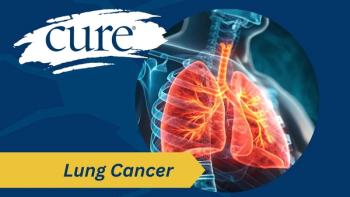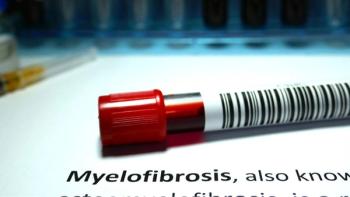
Certain Blood Types Associated With Increased Blood Clotting Risk in Patients With Cancer
An expert noted that despite the results, all patients with cancer should be aware of their increased risk for developing blood clots.
Patients with non-O blood types — A, AB or B — were at an increased risk of developing venous thromboembolism (VTE), a type of blood clot, three months after a cancer diagnosis or recurrence, according to recent study results.
“In the last years, a lot of research has been done regarding cancer-associated VTE and various risk factors could be identified,” lead study author Cornelia Englisch said in an interview with CURE®. “However, we do not know the exact mechanism underlying this common and severe complication. To make matters more complicated, we still miss up to 50% of patients that will develop these blood clots with our current risk assessment tools. Therefore, we cannot fully or reliably predict who will develop thrombosis (or blood clots). One of our goals would be to be able to identify and assess individual risks, so that we can find the patients who would benefit from preventive treatments.”
A VTE is a type of blood clot that typically starts in a person’s vein. There are two types of VTE — deep vein thrombosis and pulmonary embolism. A VTE can become life-threatening if a blood clot breaks free from a vein and travels to the lungs , ultimately blocking blood supply to the organ. Although it can happen to anyone, a VTE most commonly occurs in those in the general population with non-O blood type.
And while a connection between individual blood type and VTE risk has been observed in the general population, the study authors noted the risk and association in the cancer population is unknown.
“Having a non-O blood group is the most common genetic risk factor for the occurrence of thrombosis. It is believed that blood group influences the levels of certain clotting factors (such as von Willebrand Factor and Factor VIII) as well as receptors on platelets, which are important parts of the coagulation system and therefore also involved in blood clot formation,” Englisch, an MD-PhD student at Medical University of Vienna in Austria, said.
She and her colleagues reviewed data from 1,708 adults with a new or recurrent cancer diagnosis. The results demonstrated that patients with non-O blood types were more likely to develop VTE after three months of follow-up following their initial diagnosis or recurrence.
The risk for VTE during the first three months, however, was similar across both patient groups.
Englisch explained that this association did not appear during the first three months because patients often receive the most treatment during that time, which already increases the blood clotting risk.
“Our working theory is that this is due to the fact that right after diagnosis, cancer itself and cancer treatments increase the probability of patients developing blood clots. This is also the period with the highest occurrence rates in cancer patients,” she said. “After the three-month period, patients return to a lower risk level and therefore we can then see the association between non-O blood type and increased thrombosis risk. This hypothesis is supported by our finding that in patients with cancer types associated with a lower thrombosis risk, we saw this association independent of time.”
The data that Englisch was referring to showed that in patients with tumor types associated with high risk for VTE (pancreatic, brain or gastroesophageal cancer), there was no difference in risk between blood types. However, blood type was associated with an increased risk for clotting in patients with tumor types that are not often linked to VTE.
Everyone is at risk
Although the findings showed that patients with non-O blood type have a higher risk for the complication, Englisch explained that all patients with cancer are still at risk for developing a VTE.
“If (a patient) has symptoms that are typical for thrombosis, they should seek medical attention,” she advised. “Signs for deep vein thrombosis include swelling, redness and pain in one leg only. On the other hand, signs for pulmonary embolism include sudden shortness of breath, fainting or suddenly feeling dizzy and coughing (up blood).”
The results, according to Englisch, are important because they can help identify which patients with cancer may be at a higher risk for developing blood clots. But, she noted, more research is needed to confirm the results.
“Although these findings are new, they were exploratory in nature and therefore need further investigation,” Englisch concluded. “However, we hope that blood group can help in estimating individual risk for thrombosis in cancer patients in the future. Further, with our study we want to increase the awareness that blood clots are a common and severe complication in patients with cancer.”
For more news on cancer updates, research and education, don’t forget to




